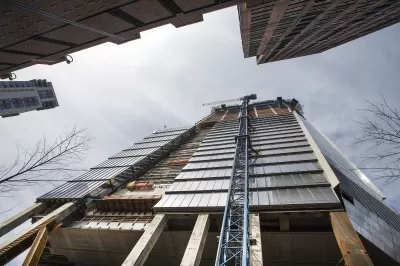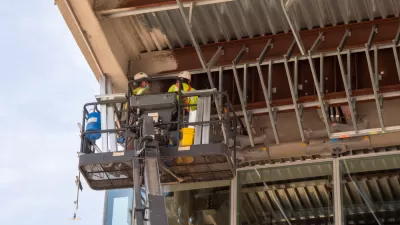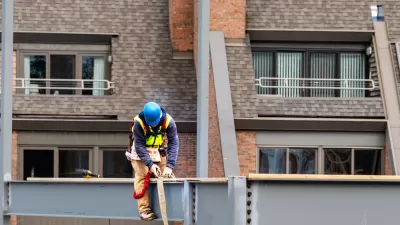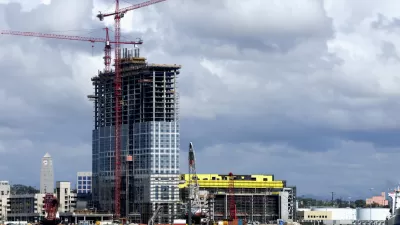While productivity improves in almost every sector of the U.S. economy, it's dropping quickly in the construction industry.

"Superficially, the construction industry would seem healthy enough," according to an article in The Economist. "Yet more than 90% of the world’s infrastructure projects are either late or over-budget, says Bent Flyvbjerg of Saïd Business School at Oxford University."
"Construction holds the dubious honour of having the lowest productivity gains of any industry," adds the article, citing data from McKinsey. The United States provides a particularly bad example of the problem. Here, productivity "has plunged by half since the late 1960s."
The article digs into the list of potential causes for the woes of the industry, discarding one of the usual suspects as the culprit (i.e., "Prices for building materials are not to blame). Instead, the article suggests two structural trends are to blame: the work is less capital intensive and the industry has yet to consolidate.
FULL STORY: Efficiency eludes the construction industry

Maui's Vacation Rental Debate Turns Ugly
Verbal attacks, misinformation campaigns and fistfights plague a high-stakes debate to convert thousands of vacation rentals into long-term housing.

Planetizen Federal Action Tracker
A weekly monitor of how Trump’s orders and actions are impacting planners and planning in America.

San Francisco Suspends Traffic Calming Amidst Record Deaths
Citing “a challenging fiscal landscape,” the city will cease the program on the heels of 42 traffic deaths, including 24 pedestrians.

Defunct Pittsburgh Power Plant to Become Residential Tower
A decommissioned steam heat plant will be redeveloped into almost 100 affordable housing units.

Trump Prompts Restructuring of Transportation Research Board in “Unprecedented Overreach”
The TRB has eliminated more than half of its committees including those focused on climate, equity, and cities.

Amtrak Rolls Out New Orleans to Alabama “Mardi Gras” Train
The new service will operate morning and evening departures between Mobile and New Orleans.
Urban Design for Planners 1: Software Tools
This six-course series explores essential urban design concepts using open source software and equips planners with the tools they need to participate fully in the urban design process.
Planning for Universal Design
Learn the tools for implementing Universal Design in planning regulations.
Heyer Gruel & Associates PA
JM Goldson LLC
Custer County Colorado
City of Camden Redevelopment Agency
City of Astoria
Transportation Research & Education Center (TREC) at Portland State University
Jefferson Parish Government
Camden Redevelopment Agency
City of Claremont





























